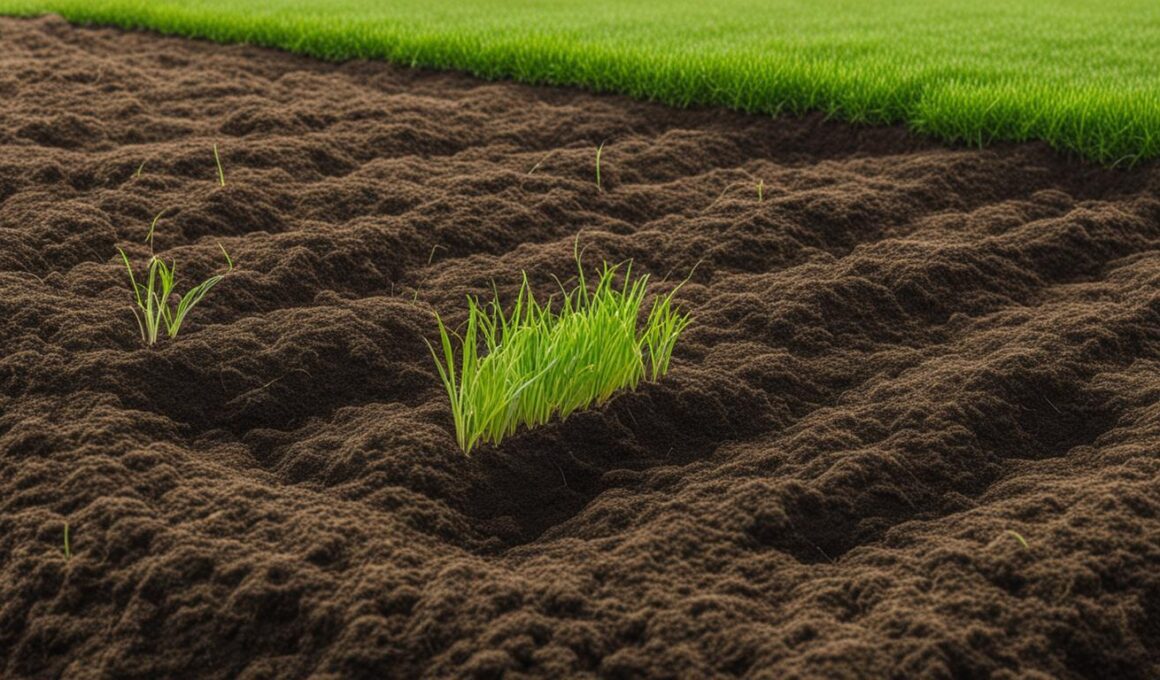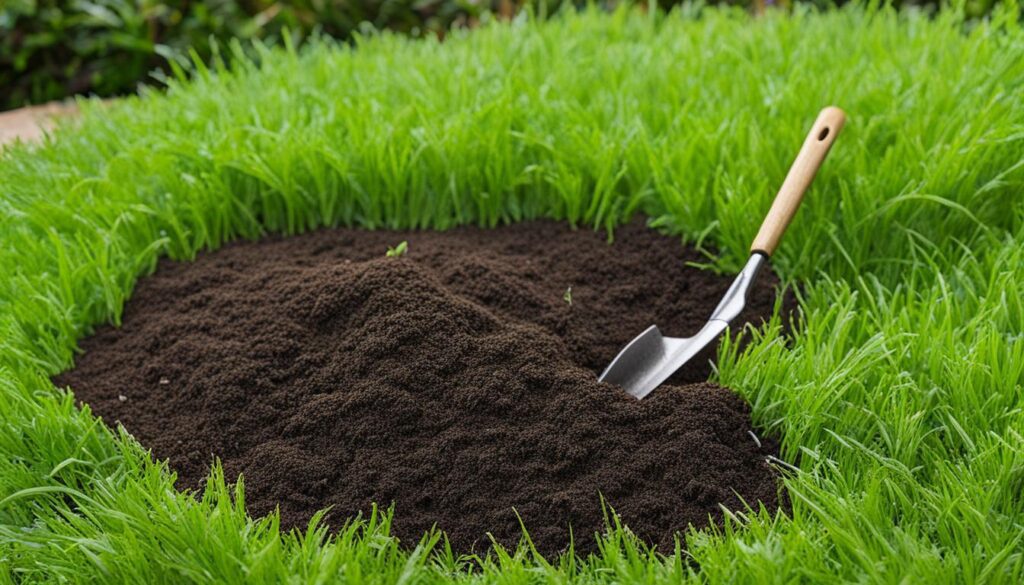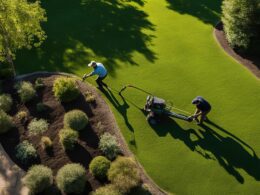Are you looking for lawn care tips to achieve a lush, vibrant lawn without the hassle of aerating your soil? You’ve come to the right place! In this article, we’ll explore the process of overseeding a lawn without aerating and provide you with expert tips and tricks to achieve great results.
Many homeowners wonder whether aerating is necessary before overseeding their lawns. While aerating can improve germination and growth rates, it is not a mandatory step. You can still achieve successful overseeding by following proper lawn preparation techniques.
The first step is to mow your lawn lower than 2 inches to provide a favorable environment for seed germination. Raking the lawn to remove debris and loosen the topsoil is crucial to create an ideal seedbed. This will enhance seed-to-soil contact and promote healthy growth.
Once the lawn is prepared, it’s time to spread the grass seed evenly over the area. Make sure to follow the label recommendations for the appropriate amount of seed to use. Gently rake over the seeded area to ensure the seeds are properly embedded in the soil. This will greatly enhance their chance of germination.
After overseeding, it’s important to fertilize the lawn with a starter fertilizer to provide essential nutrients for the new grass. Water the lawn lightly but frequently to keep the soil moist and facilitate germination.
Remember, while aerating can improve results, overseeding without aerating is still possible. By properly preparing your lawn and taking care of the newly seeded area, you can achieve a beautiful, dense lawn. Stay tuned for more lawn care tips in the following sections!
Do You Need to Aerate Before Overseeding?
While it is not a must to aerate before overseeding, aerating can greatly improve the germination and growth rates of the grass seed. Aeration loosens up compacted soil, improving oxygen supply and providing nutrients and minerals to the new grass seed. This results in healthier and denser grass growth. Lawns with easily compacted soils, such as clay soil, could greatly benefit from aeration before overseeding. However, if you choose not to aerate, you can still achieve successful overseeding by following the proper mowing, raking, and seed spreading techniques.
By aerating before overseeding, you create small holes in the soil that allow the grass seed to penetrate deeper and establish a stronger root system. These holes also improve drainage, prevent waterlogging, and enhance the absorption of nutrients. Overall, incorporating aeration into your overseeding process can significantly improve the success of your lawn renovation efforts.
Can I Overseed My Lawn Without Aerating?
Yes, you can overseed your lawn without aerating, but using a spike aerator vs plug will produce different results. A spike aerator pokes holes in the ground, while a plug aerator removes small plugs of soil. The latter is more effective for overseeding as it creates better seed-to-soil contact.
How to Overseed a Lawn Without Aerating
If you’re looking to overseed your lawn without aerating, there are a few simple steps you can follow to achieve successful results. Begin by mowing your grass to a height lower than 2 inches. This will create an ideal environment for seed germination. Take the time to rake the lawn, removing any thatch and debris, which will help loosen up the topsoil and promote better seed-to-soil contact.
Next, it’s time to spread the grass seed evenly over the prepared turf. Be sure to follow the label recommendations for the correct amount of seed to use. Achieving good seed-to-soil contact is crucial for optimal germination. After spreading the seed, gently rake over the area to settle the seeds into the soil.
Finally, it’s essential to fertilize the overseeded area with a starter fertilizer and lightly water the soil to keep it moist for germination. This will provide the necessary nutrients and hydration for the new grass seed to thrive. By following these proper lawn preparation and grass seed spreading techniques, you can achieve successful overseeding without the need to aerate.










